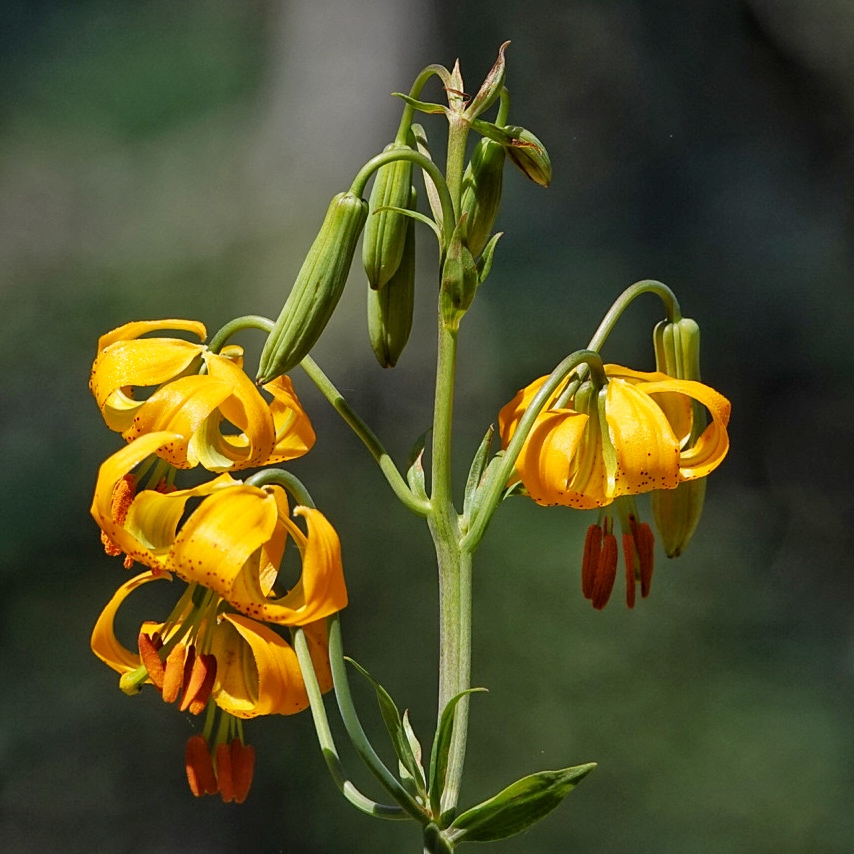
Possibly it’s because orange is one of the colors that really ‘pops’ in a landscape for these color blind eyes; or it might a holdover from the wonder I felt the first time I ever saw them, when I assumed they were a cultivar (since in my ignorance I thought natural flowers weren’t shaped like this), only to be told that these beautiful forms were not sculpted by the hand of man, but had evolved to fill precisely that ecological niche; or it could be because of the delight I have felt watching swallowtail butterflies dangling upside down from them, vigorously taking in nectar; but regardless of why, I simply love Lilium columbianum, and feel an anticipatory joy whenever I spy one.
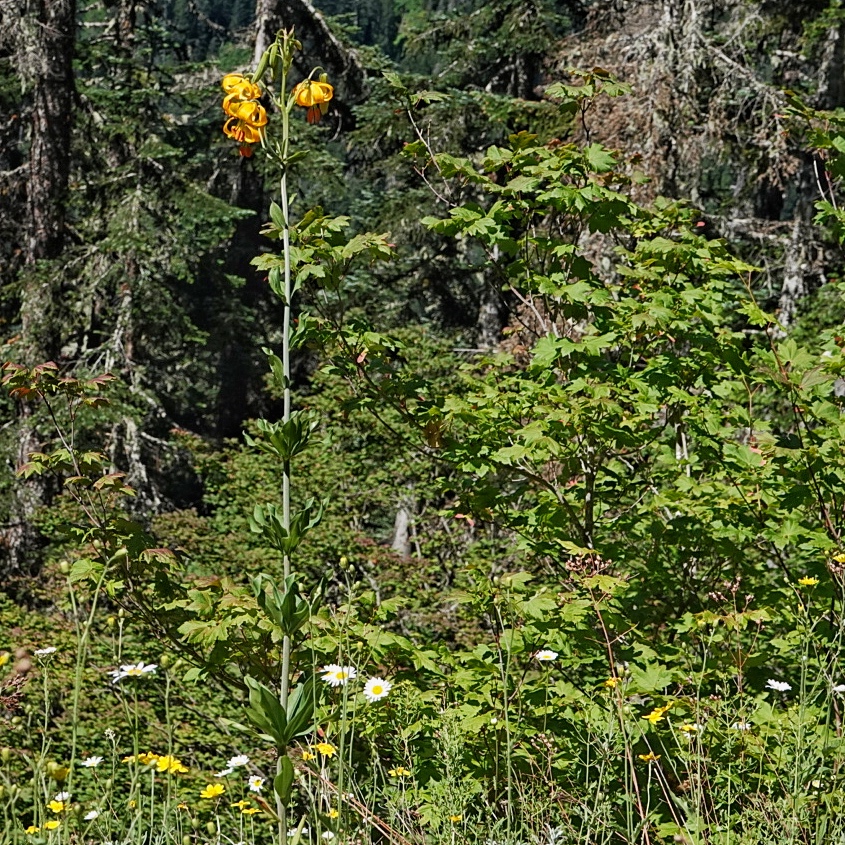
I have always called them Columbia tiger lilies, but it appears that the accepted common name is Columbia Lily. Another thing that I rather like about them is that they seem a bit aloof. I usually find them widely scattered in the landscape, or maybe 2-3 in a 50 sq. ft. area, but I’ve never found clusters of them like I usually do with Erythronium or Fritillaria lilies.
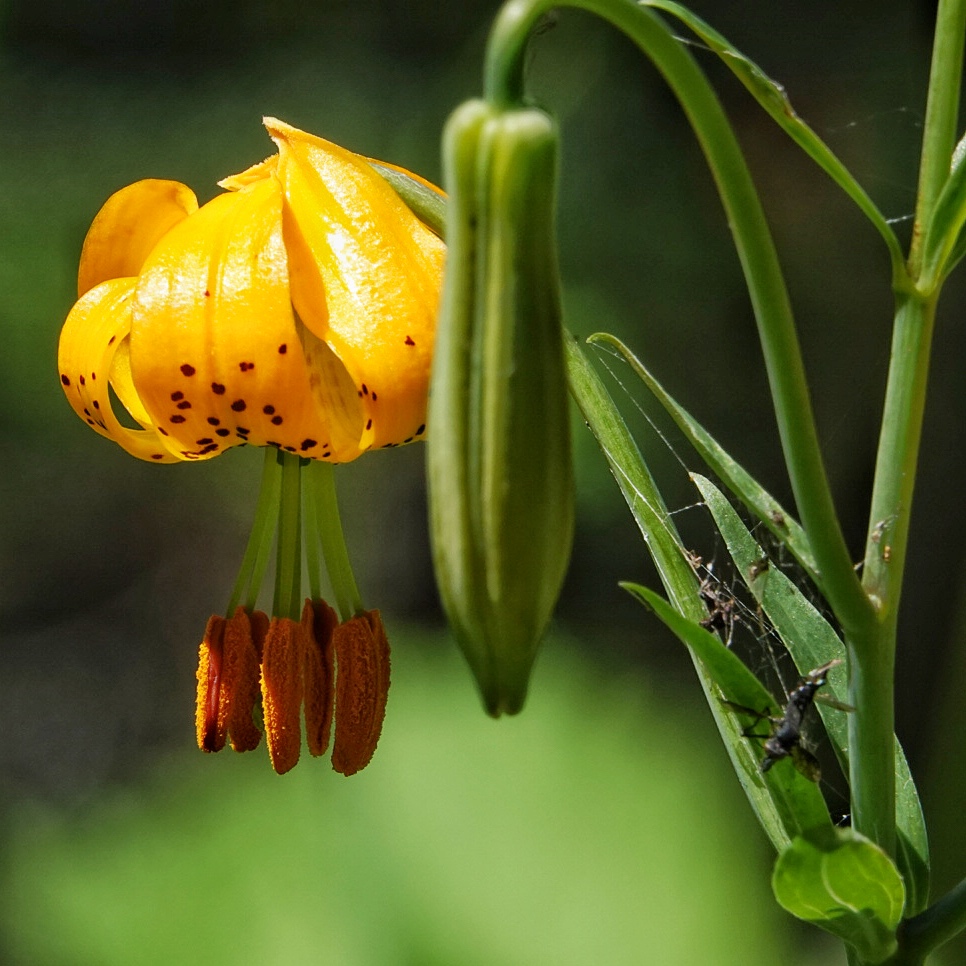
Indigenous peoples steamed the bulb (corm) for food, and in some cultures it was a staple. Bulbs were mashed and dried into cakes and stored for winter food. Due to its peppery flavor they also mixed them with meat and salmon roe as a spice. Many cultures roasted or dried the roots as a food source. They don’t seem to have found medicinal purposes for this plant, unless you count mixing mashed bulbs with crushed stink bugs, as a ward against witchcraft, as being medicinal.
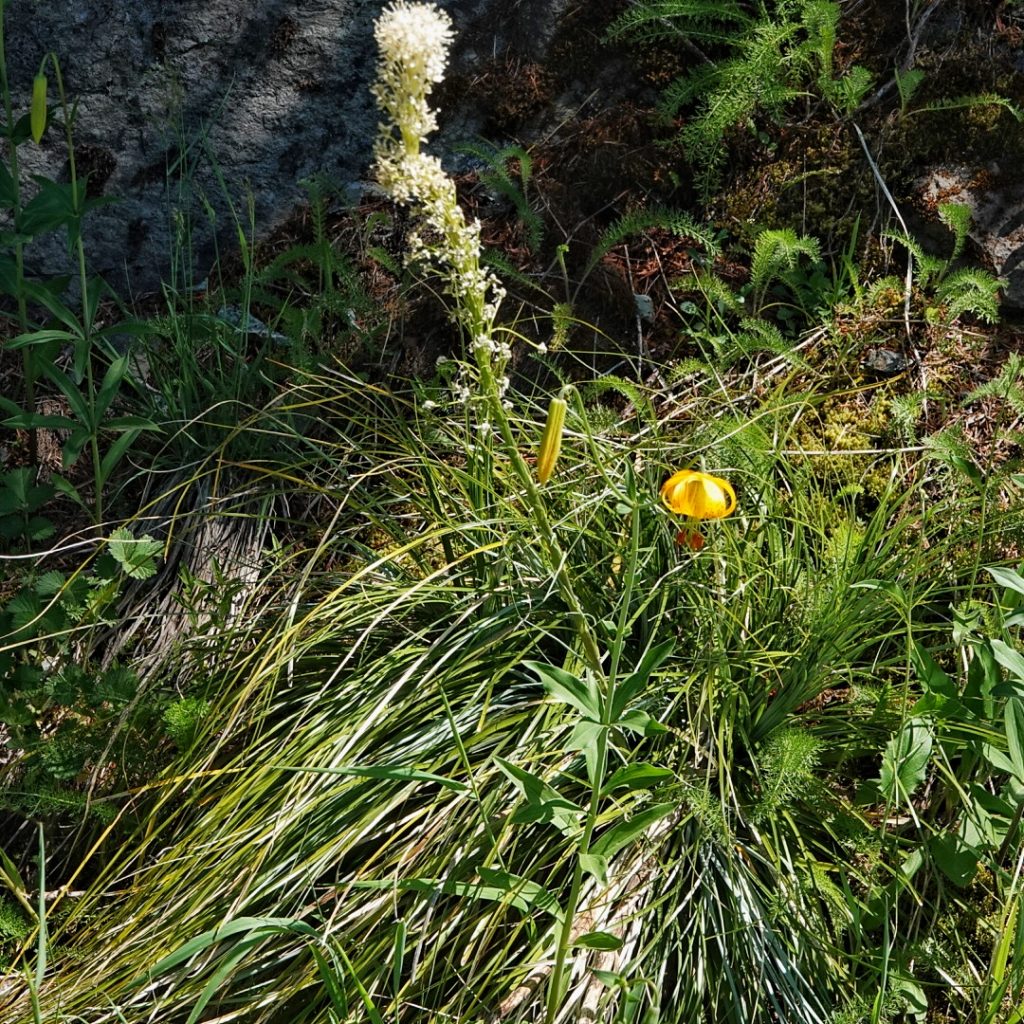
This species is known to hybridize easily when in proximity (sympatric) with closely related lilies, such as Lilium kelloggii , L. occidentale, and L. pardalinum. Hybrids with L. occidentale, which usually happen because Lilium columbianum has been introduced into wetlands when human disturbance has created drier locations due to roads or powerlines, are particularly problematic, because L. occidentale is a rare and threatened species, and the hybridization not only complicates identification but removes that genetic contribution from the population base.

Description-Tall (up to 48”) lily with an unbranched stalk; leaves in whorls or scattered, clasping stem, lanceolate, up to 4” long by 1.25” wide, generally with wavy margins; up to 20 flowers at top of stalk; flowers nodding to pendant, yellow orange to orange with maroon spots, tepals recurved; fruit ridged, up to 2” long.
Similar species-Only Lilium occidentale and L. pardalinum are likely to be confused with this; they are both found only in sw Oregon/nw California, and are wetland obligates; positive identification requires looking at the corm.

Habitat– Well drained areas of moist to mesic prairies, meadows, forest edges and openings, sea level to 9,000’ elevation.
Range-Western North America; region wide in appropriate habitat; absent from the most arid interior locations.
Reproductive timing– Blooms May to August
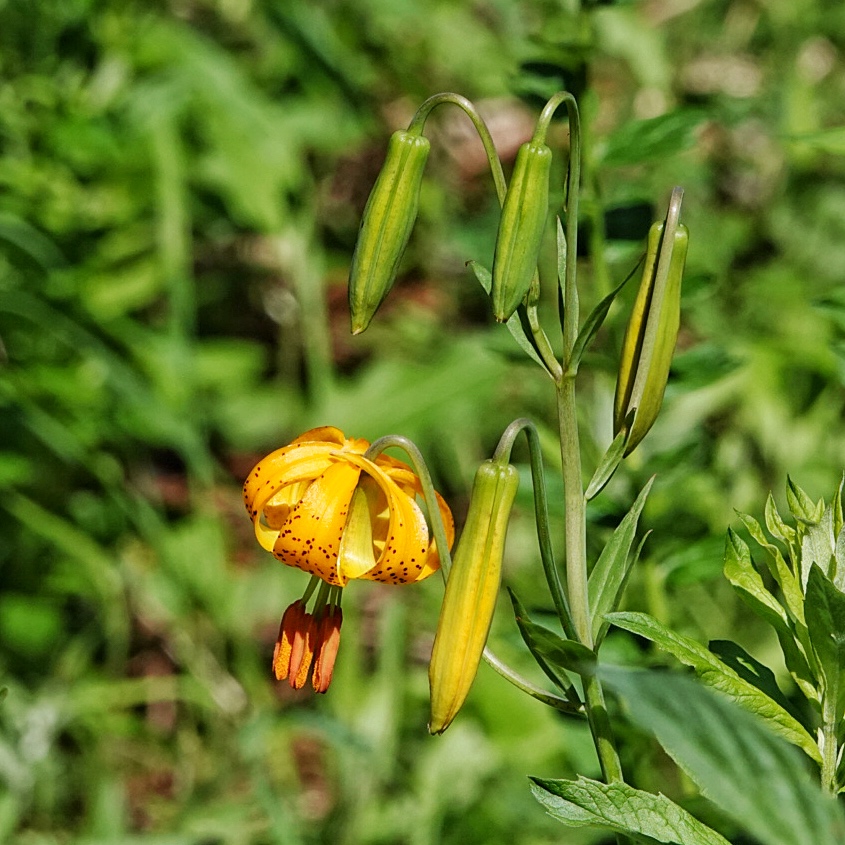
Eaten by-Rufous hummingbirds (Selasophorus rufus) and members of the genus Papilio (swallowtails) are the primary pollinators; I cant find information on anything else eating this plant, although other insects do sometimes visit the flowers.
Etymology of names–Lilium is from the Latin for lily. The specific epithet columbianum is a reference to the type species being found near the Columbia River.

https://www.fs.fed.us/wildflowers/plant-of-the-week/lilium_columbianum.shtml
BRIT – Native American Ethnobotany Database
OregonFlora Lilium columbianum
Lilium columbianum | Columbia Lily | Wildflowers of the Pacific Northwest
http://biology.burke.washington.edu/herbarium/imagecollection/taxon.php?Taxon=Lilium%20columbianum
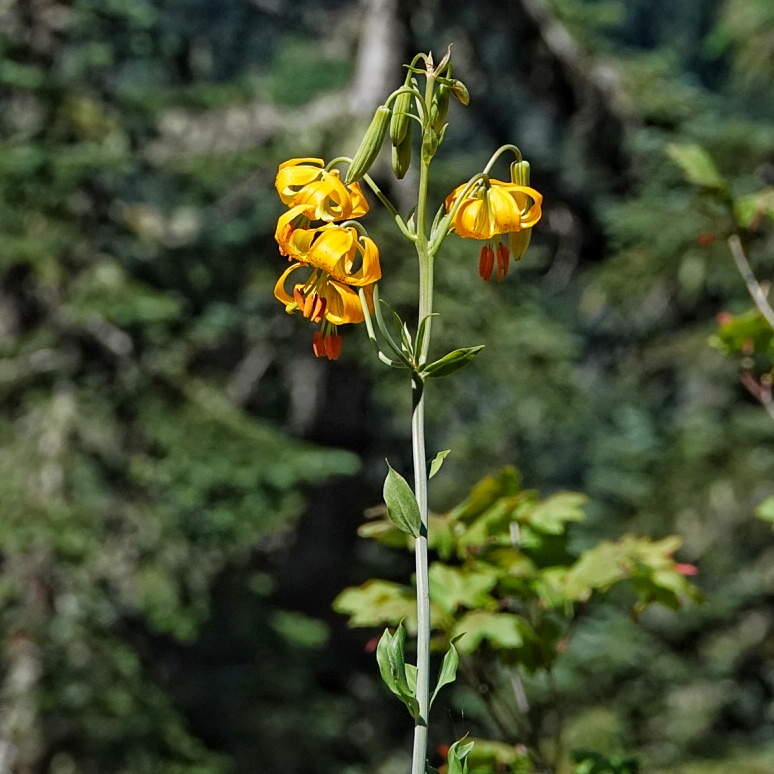
As a teenager, I also thought they were a cultivar. Probably because my grandmother had some (she did dig plants up from the wild on occasion) or a similar looking cultivar in her garden. When out of high school, I got my first copy of Gilkey and then Hitchcock & Cronquist. That’s when I accidentally discovered the plant was a native.
I vaguely remember seeing one on the Carty unit, out by Morgan’s. It was a Boy Scout leader that clued me in to what these were, out in the Gorge, by the mouth of the Wind River
BTW, the Carty Unit used to have a few scattered about. However, I found the largest numbers along the train tracks running through Ridgefield.
My comment re the Carty unit L. columbianum was in response to Craig. I just replied to the wrong comment.